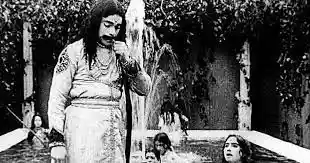Bollywood Through the Ages: Tracing the Evolution of India's Film Industry
From black and white to high definition, from Silent to Sound, how has Bollywood transformed over the years? Explore the fascinating evolution of India's film industry and discover how it has become a platform for social change.

Still from the First Indian Feature Film "Raja Harishchandra" (1913) directed by Dadasahab Phalke. (Source: The Quint)
Bollywood, the Indian Film Industry, is one of the largest and most prolific film industries in the world. Based in Mumbai, formerly known as Bombay, Bollywood produces over 1,000 films annually in multiple languages. The industry has a rich history spanning over a century, from its humble beginnings with silent films to the present day, where it is recognized globally for its unique style of filmmaking. Bollywood is known for its larger-than-life stories, colorful dance sequences, and melodious music, which have captivated audiences around the world.
The Indian Film Industry had its humble beginnings in 1896 when the Lumiere Brothers, two French filmmakers, screened six short films in Mumbai. The screening was a hit, and it paved the way for the growth of the film industry in India. Soon, Indian filmmakers started making short films, mostly documenting local events and festivals. These films were silent, with no sound or dialogue, and were accompanied by live music.
In 1913, the first Indian feature film, Raja Harishchandra, was released. It was directed by Dadasaheb Phalke, who is considered the father of Indian cinema. The film was a commercial success and marked the beginning of the Indian Film Industry.
The 1930s marked a significant shift in Indian cinema. Sound was introduced in Indian films, and the first talkie film, Alam Ara, was released in 1931. With the advent of sound, Indian filmmakers were able to explore new storytelling techniques, and music became an integral part of Indian cinema.
The 1940s and 1950s are considered the golden age of Indian cinema. During this period, Indian films were known for their melodious songs, elaborate dance sequences, and larger-than-life sets. Some of the biggest stars of Indian cinema emerged during this period, including Raj Kapoor, Dilip Kumar, Dev Anand, and Nargis.
The 1960s and 1970s saw a significant change in Indian cinema. Filmmakers started exploring social issues and making films that were more realistic. The 1960s also saw the emergence of the Angry Young Man, a character portrayed by Amitabh Bachchan in films like Zanjeer and Deewar. The Angry Young Man was a reflection of the changing times and the disillusionment of the youth with the establishment.
The 1970s also saw the emergence of parallel cinema, which focused on more realistic and socially relevant themes. Filmmakers like Satyajit Ray, Shyam Benegal, and Mrinal Sen were at the forefront of this movement. Parallel cinema was a departure from mainstream Bollywood films and was critically acclaimed.
The 1980s saw a return to more escapist and melodramatic Bollywood films. The era saw the emergence of the Masala film, which was a mix of action, drama, romance, and comedy. These films were known for their larger-than-life sets, choreographed dance sequences, and catchy songs.
The 1990s saw the emergence of the Khans, a group of actors including Shah Rukh Khan, Aamir Khan, and Salman Khan. These actors dominated the Indian Film Industry in the 1990s and 2000s and were known for their romantic films.
The 2000s saw a significant change in Indian cinema. Filmmakers started exploring new themes, and the line between commercial and parallel cinema started to blur. The emergence of multiplexes and satellite television also changed the way Indian films were made and distributed.
The 2010s and 2020s have seen a further evolution of Indian cinema. Filmmakers have started exploring taboo topics, and films are becoming more diverse and inclusive. Indian films are also gaining recognition on the global stage, with several Indian films being nominated for and winning international awards the recent example is RRR (2022). The use of technology in filmmaking has also seen significant advancements, with films being shot using high-end cameras and special effects being used to enhance the visual appeal of films.
In recent years, Indian cinema has also seen a push towards more socially conscious filmmaking. Filmmakers are increasingly using their platform to address social issues such as gender equality, LGBTQ+ rights, mental health, and environmental conservation. This trend has been welcomed by audiences and has helped to create a more socially aware and responsible film industry.
The evolution of Bollywood over the years has been marked by significant changes in storytelling, technology, production values, and societal values. From the humble beginnings of silent films to the global recognition of Indian films, Bollywood has come a long way. As the Indian Film Industry continues to evolve, it will be interesting to see how filmmakers continue to push the boundaries and explore new themes and techniques in storytelling.


